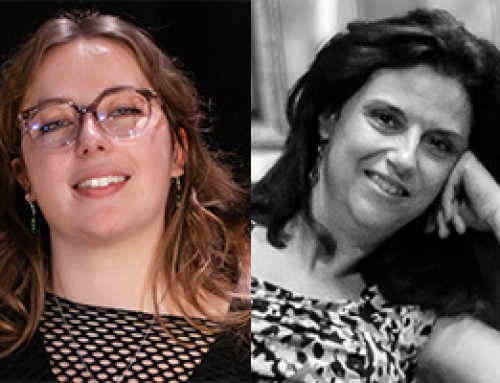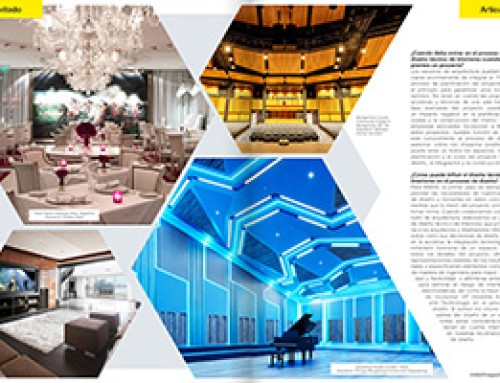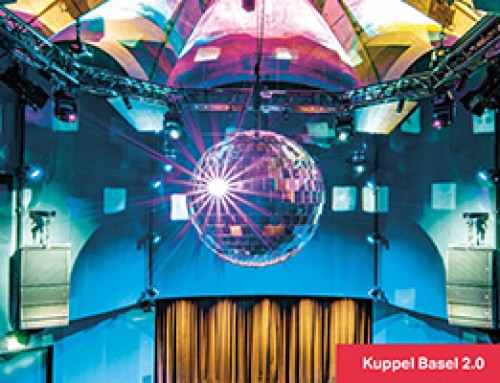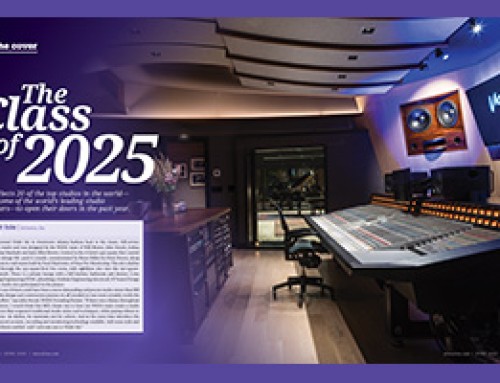by Curtis Berry
When Stevie Wonder’s “Superstition” was released in November of 1972, Wonder had already had many hit records under his belt and his trajectory of fame was well underway. In early 1972, he began to assert more autonomy over his creative direction and began collaborating with electronica pioneers Bob Margouleff and Malcolm Cecil.
This era, which was one that saw many artists asserting more artistic control over their recording careers, saw Wonder enter his prolific and introspective “classic period,” which produced some of R&B’s most interesting crossover records such as Music of the Mind, Talking Book and Innervisions. In 1972, Wonder had completed a North American tour with the Rolling Stones and this helped expose his music to larger and more receptive audiences, further catapulting his well-deserved exposure and fame well beyond its Motown base.
Interestingly, Wonder had originally written “Superstition” for Jeff Beck (indeed, a different version appeared on a later Beck album entitled Beck, Bogert & Appice). In the end, though, he wisely decided to record and release it himself. He did end up handing over another track to Beck called “’Cause We’ve Ended as Lovers”–one of the more emotional tracks on Beck’s Blow by Blow album.
Electric Lady Studios and “Tonto”
Oftentimes there are people behind the scenes who play an important role in developing an artist’s sound. In the case of Stevie Wonder, this was undoubtedly the case—especially during the early ‘70s. Robert Margouleff and Malcom Cecil were Wonder’s “production team” and the wheels of his success in the studio. Each of them brought very distinct skills to the table: Cecil was very musically inclined, while Margouleff’s strengths were in synth programming and other areas. They were both more than capable as recording engineers.
By the time they started recording “Superstition” in 1972, the team already had one record together under their belt. They had settled into New York City at a new studio in Greenwich Village called Electric Lady. Electric Lady was the creative home of none other than Jimi Hendrix until his untimely death in 1970. Designed by legendary studio designer John Storyk, it was also arguably the first “artist-driven” studio in the world.
The studio selection was important for many reasons. First, Electric Lady was a “free” environment—one in which the artist could come and go as he or she pleased. Second, the décor was much more creative than any other contemporary studio. Storyk, who was influenced by classical architects like Antonio Gaudi and Frederick Keisler, used a combination of curves and colored lights to help artists realize their creative “Innervisions.” Margouleff says that most of the other studios, in contrast, were inhabited by people in long white coats and used a whole lot of fluorescent lighting.
In the days of “Superstition,” it would not have been unusual for the trio to start working at 7pm and wrap up around sunrise. “If we needed to work three days in a row, it didn’t make any difference; there were no restrictions at Electric Lady.” recalls Margouleff. “Plus it was just beautiful and they had a ton of custom equipment.” “
In addition to Wonder, Margouleff and Cecil, there was a fourth member of the team, affectionately known as “Tonto.” Margouleff remembers Tonto as the “first neotimbral orchestra.” “It was and still is a conglomeration of multiple synthesizers; some from Moog, some from ARP, some that Malcolm built,” he recalls. Tonto was massive, and capable of generating a startling range of electronic sounds. It even had an early sequencer on board. John Storyk had designed its elaborate cabinetry, which had a massive footprint (at least for an instrument) to hold its synths, electronics and wiring. Tonto played a very prominent role on Wonder’s work during this period, generating the electronic sounds that distinguish his work from other R&B artists of the day.
One Man Band
For “Superstition,” Stevie had all the sounds in his head and developed the track in the studio. Aside from horn and guitar overdubs that would be added later, there were no musicians that had to be rehearsed: Wonder would play all the instruments.
When recording Wonder, Margouleff and Cecil had to be sensitive to his way of working–not only because he played all the instruments, but also because he is unsighted. Ergonomics were a primary concern and Wonder’s ease of movement and comfort were both top of mind. “We set up the instruments in a big circle,” says Margouleff. “We had the drums, Tonto, the Clavinets and the Rhodes keyboards set up in the control room, and there was always an open mic. Stevie could easily move from one instrument to another as he saw fit.”
“Both Malcolm and I had worked with unsighted people before–I had worked with unsighted people when I was in high school.” They set the room up in such a way that he didn’t have to be shown where anything was; Stevie could get around completely on his own.
Getting Down to Basics
When it came to laying down the basics, they started with the drums. Margouleff recalls that the drums went down seamlessly, without Wonder relying on a click track or any other accompaniment—only the sounds and rhythm in his head. For this reason, there aren’t many “takes” of “Superstition,” because once Stevie got the drums right, they quickly moved on to the next part.
Wonder’s drumming had a special quality, says Margouleff. “It was all free play, but emphasized the backbeat. Stevie’s drumming also has very subtle tempo changes in it, and that’s one thing that made it so magical.” Margouleff contrasts this approach with the more common approach of today, which often involves click tracks and sequencers. “Ever since the sequencer was invented, our rhythms have become much more militant. There is no room for music to speed up and slow down, so unfortunately, you have the same tempo from verse to chorus, from chorus to bridge.”
Once the drums were laid down, Wonder played the bassline on a Moog synthesizer before laying down what was perhaps the track’s most defining instrument, a Hohner clavinet. Rather than taking a direct output from the clavinet and sending it straight into the console, Margouleff and Cecil experimented a bit: “We hooked up all kinds of funny guitar boxes. We had the Mutron 5 phaser, we had wah wah pedals and all kinds of distortion boxes coming out of the clavinet.”
Then the remaining instruments were laid down, including a bed of Tonto-based electronica, and then finally the distinctive horns, which closely follow the bassline of the song. Wonder wrote all the horn arrangements and passed them out to Trevor Laurence, Steve Madaio and David Sanborn, who belted out the parts.
Margouleff says that Wonder’s real gift was in his vocal ability: “Stevie is a spectacular singer. Not great, spectacular.” Wonder didn’t have a definitive “go to” mic when it came to vocals, and Margouleff and Cecil would change it up according to the mood of the song. He was also very receptive to feedback: “We always had a hot mic in the control room and Stevie could always hear in his headphones what we were saying and what our feelings were,” Margouleff says. “Very often, Malcolm would read the lyrics to him in his headphones a line at a time. In some songs, Stevie was literally prompted line by line and if you listen carefully, you actually hear the earphone leakage.”
Mixing a Masterpiece
By the time mixing came around, Margouleff and Cecil had relocated to California. “When we first came out, we were working at a place called Crystal on Vine Street in Hollywood. It was an old post office, and they literally only had one room. They would cater to the acoustic musicians like James Taylor and Joni Mitchell. They couldn’t accommodate all these folks any more—Stevie had displaced them. We were there night and day.”
He recalls that mixing “Superstition” was very straightforward, because they had recorded it that way. “Malcolm and I always got the sounds we wanted when we were recording. When mixing, we could always put the faders up to maximum headroom straight across the console and the mix would come up.”
While on the west coast, Margouleff and Cecil were early experimenters with quadraphonic sound. Margouleff says that they developed the first quadraphonic mix room at Record Plant, and as a result, were able to better understand the principles of sonic placement. This enabled them to achieve a stereo mix with much greater ease.
In addition to the well-known stereo mix of “Superstition,” there is also another lesser-known mix. “We mixed Superstition in quad,” recalls Margouleff. “Somewhere in Stevie’s library, there exists a four-track quad mix that was absolutely fabulous.”
Reflecting on “Superstition”
Margouleff is modest about his achievement working on such a timeless classic. “I didn’t think we were doing anything other than what we were supposed to be doing. My job was to help Stevie realize his vision—as the record says, his “Innervisions.” The man knew what he wanted to do and he did it.
The team of Wonder, Margouleff and Cecil would only work together for a few years on a handful of albums and they all went to very successful careers. For “Superstition,” their talents converged like comets in the night, leaving a lasting impression that will endure for many years.








